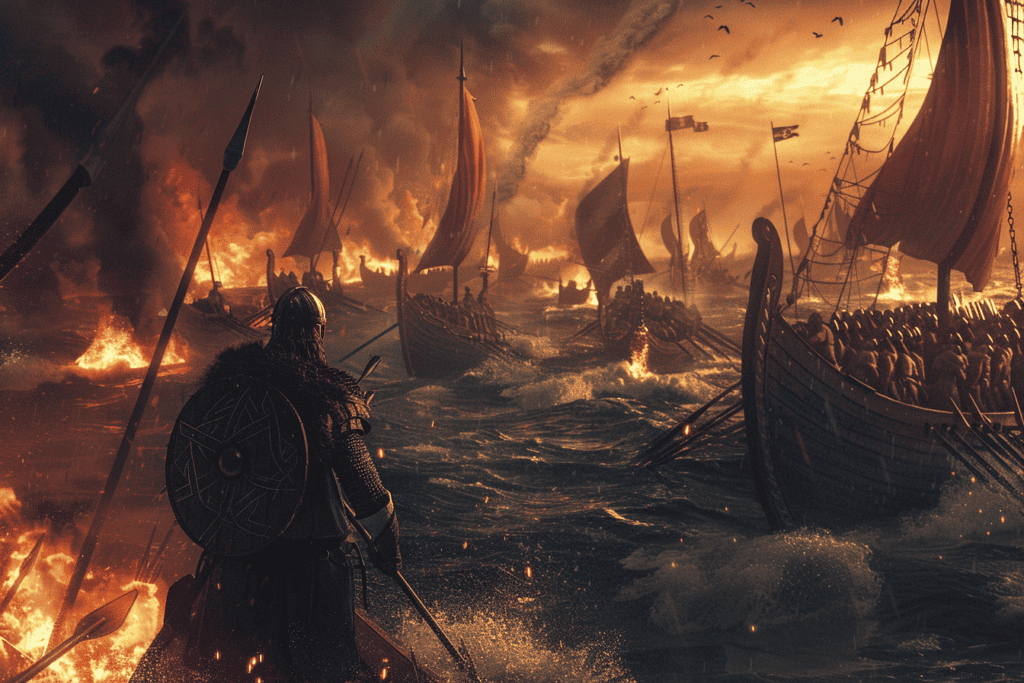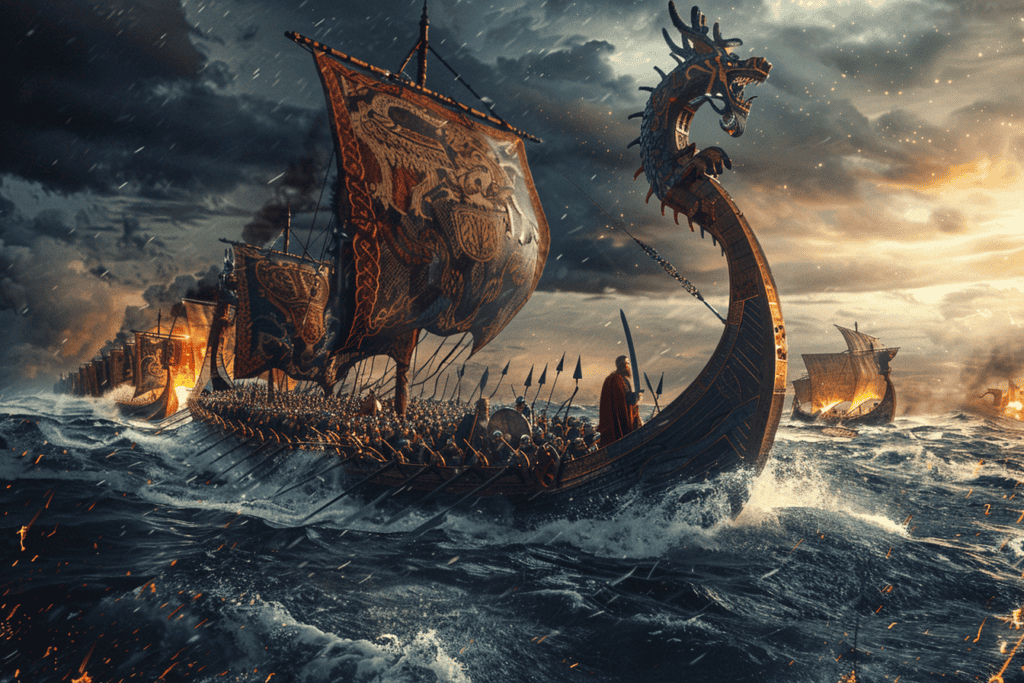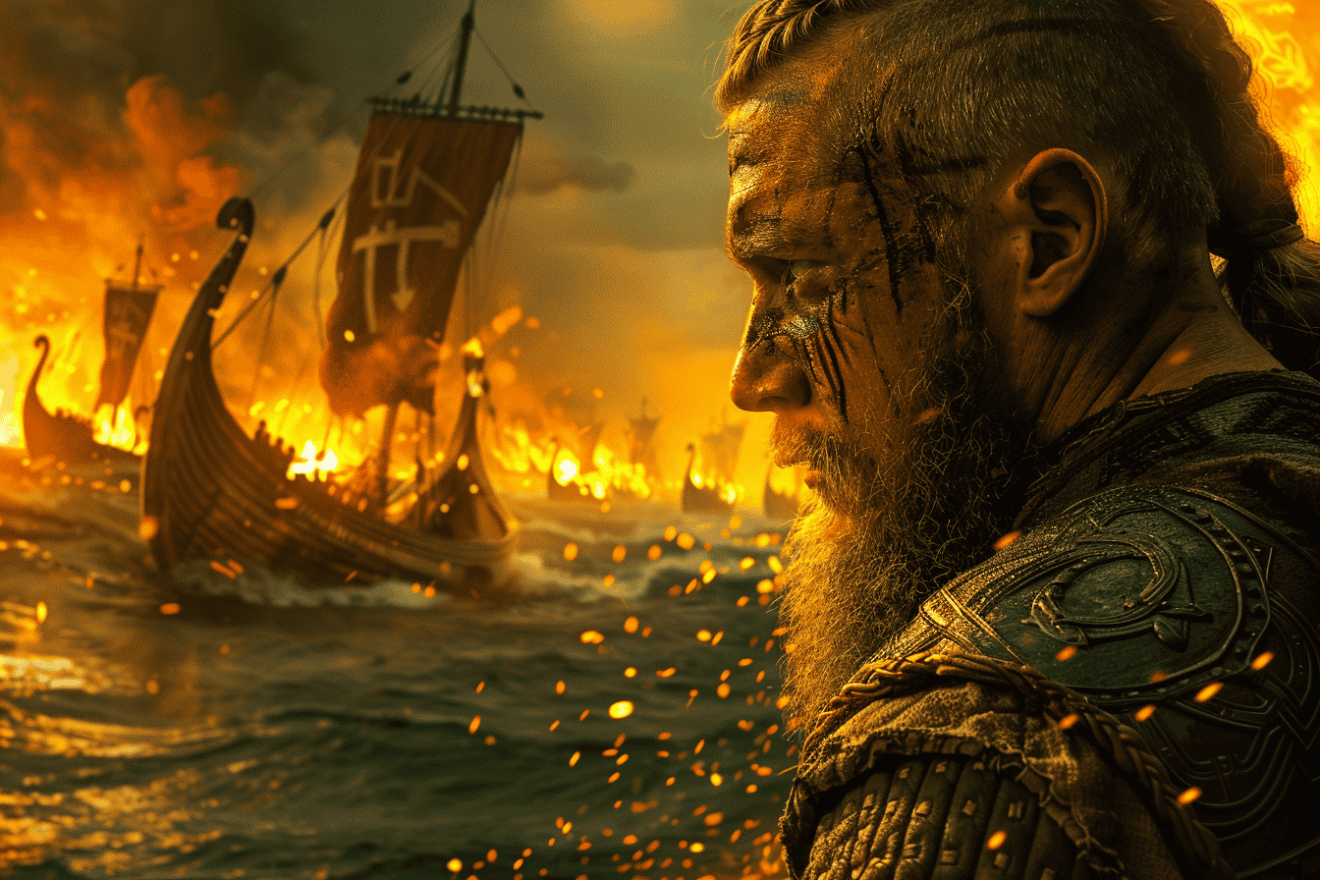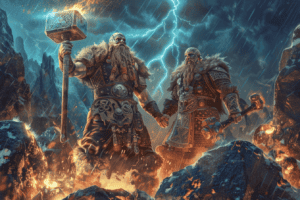The Battle of Svold was a pivotal moment in Viking history.
Here, Norway’s King Olaf Tryggvason faced off against a coalition of Swedish, Danish, and Norwegian forces. It was a battle that would shape the future of Scandinavia for centuries to come.

King Olaf Tryggvason was a legendary figure in Norwegian history, known for his military prowess and his efforts to spread Christianity throughout the region.
However, his reign was marked by conflict, as he faced opposition from powerful local chieftains who resented his attempts to centralize power.
The Battle of Svold was the culmination of these tensions, as Olaf faced off against a formidable enemy coalition. Despite his bravery and tactical skill, Olaf was ultimately defeated, and his death marked the end of an era in Norwegian history.
Today, the Battle of Svold remains a significant event in the Viking Age, and a testament to the power struggles that defined this tumultuous period.
Historical Context and Prelude to The Battle

Olaf Tryggvason was born in 963 AD to Tryggve Olafsson, a chieftain of the royal family of Norway. After his father’s death, Olaf fled to Russia, where he was baptized and became a Christian.
He then traveled to Constantinople, where he served in the Byzantine army and gained valuable military experience.
In 995 AD, Olaf returned to Norway and was crowned king. He immediately set out to convert his people to Christianity, using force if necessary. This led to a period of intense conflict and resistance from the pagan population.
Alliances and Rivalries in Scandinavia
During Olaf’s reign, Denmark and Sweden were also vying for power and influence in the region. Denmark, under the leadership of Svein Forkbeard, had long sought to gain control of Norway.
Meanwhile, Sweden, under the rule of Olaf Skötkonung, was also expanding its territory.
In Norway, Olaf faced opposition from Eirik, Jarl of Lade, who resented Olaf’s attempts to centralize power and impose Christianity on the population. Eirik formed an alliance with Svein Forkbeard and other pagan leaders in the region.
The stage was set for a major clash between these rival factions. In 999 or 1000 AD, the Battle of Svold was fought in the western Baltic Sea between Olaf’s fleet of 11 warships and an alliance of more than 70 warships led by Svein Forkbeard, Olaf Skötkonung, and Olaf’s enemies in Norway.
The battle was a devastating defeat for Olaf Tryggvason and marked the end of his reign. He is said to have jumped into the ocean in full armor, choosing to end his life rather than fall into enemy hands.
The battle also had significant implications for the future of Christianity in Scandinavia and the balance of power in the region.
The Naval Clash at Svolder

The Battle of Svolder was a monumental naval battle fought between the Norwegian fleet, led by King Olaf Tryggvason, and an alliance of Danish and Swedish fleets, led by Sweyn Forkbeard and Olaf Skötkonung, respectively.
The battle took place in the western Baltic Sea in the year 999 or 1000. The Norwegian fleet consisted of only 11 warships, while the alliance had more than 70 warships.
Despite the numerical disadvantage, King Olaf Tryggvason was determined to fight to the death.
As the fleets engaged, the Norwegian fleet charged forward with King Olaf’s ship, the Long Serpent, leading the charge.
The Long Serpent was a magnificent ship, the largest and most impressive of the Norwegian fleet. It was said to be over 100 feet long and adorned with intricate carvings and decorations.
The ship was also heavily armed with a fearsome weapon known as the Iron Ram, which was designed to pierce the hulls of enemy ships.
The Long Serpent
The Long Serpent was a formidable ship, but it was not invincible. As the battle raged on, the Long Serpent became the target of the alliance’s most skilled warriors. Einar, a renowned Jomsviking warrior, managed to board the Long Serpent and engage in a fierce battle with King Olaf himself. The battle was intense, but ultimately, Einar emerged victorious, striking the fatal blow that killed King Olaf.
The death of King Olaf was a tragic end to a heroic battle. Despite the loss, the Norwegian fleet fought on, determined to honor their fallen king. The battle continued for several more hours, with both sides suffering heavy losses. In the end, the Norwegian fleet was defeated, and the surviving ships were forced to flee.
The Battle of Svolder was a significant event in Viking history, marking the end of the reign of King Olaf Tryggvason and the beginning of the Danish and Swedish domination of the region. The battle was also notable for the bravery and determination of the Norwegian fleet, who fought valiantly against overwhelming odds.
Aftermath and The Impact on Norway and Scandinavia
The Battle of Svold was a turning point in the history of Norway and Scandinavia. The death of King Olaf Tryggvason left a power vacuum that was quickly filled by his rivals. The Norwegian throne was eventually taken by Olaf’s former ally, Sweyn Forkbeard, the King of Denmark. The battle also marked the end of the Viking Age and the beginning of a new era of Scandinavian history.
The defeat of Olaf Tryggvason had a profound impact on the Norwegian people. The country was divided into several small kingdoms, each ruled by a local chieftain. It took several decades for Norway to be reunified under a single ruler. The Battle of Svold also had a lasting impact on the relationship between Norway, Denmark, and Sweden. The three countries continued to compete for power and influence in the region for centuries to come.
Cultural Depictions in Literature and Art
The Battle of Svold has been the subject of many works of literature and art over the centuries. The Icelandic sagas, particularly Heimskringla by Snorri Sturluson, provide a detailed account of the battle and its aftermath.
The Kings’ Sagas, also written by Snorri Sturluson, provide additional information about the life and reign of King Olaf Tryggvason.
The battle has also been the subject of many ballads and folk songs in Scandinavia. One of the most famous is the Swedish ballad “Kung Olav Tryggvason” which tells the story of the battle from Olaf’s perspective.
The battle has also been depicted in many works of art, including paintings and sculptures.
In addition to its cultural significance, the Battle of Svold played an important role in the history of Norway and Scandinavia. It marked the end of the Viking Age and the beginning of a new era of Scandinavian history. The battle also had a lasting impact on the relationship between Norway, Denmark, and Sweden.










Add Comment